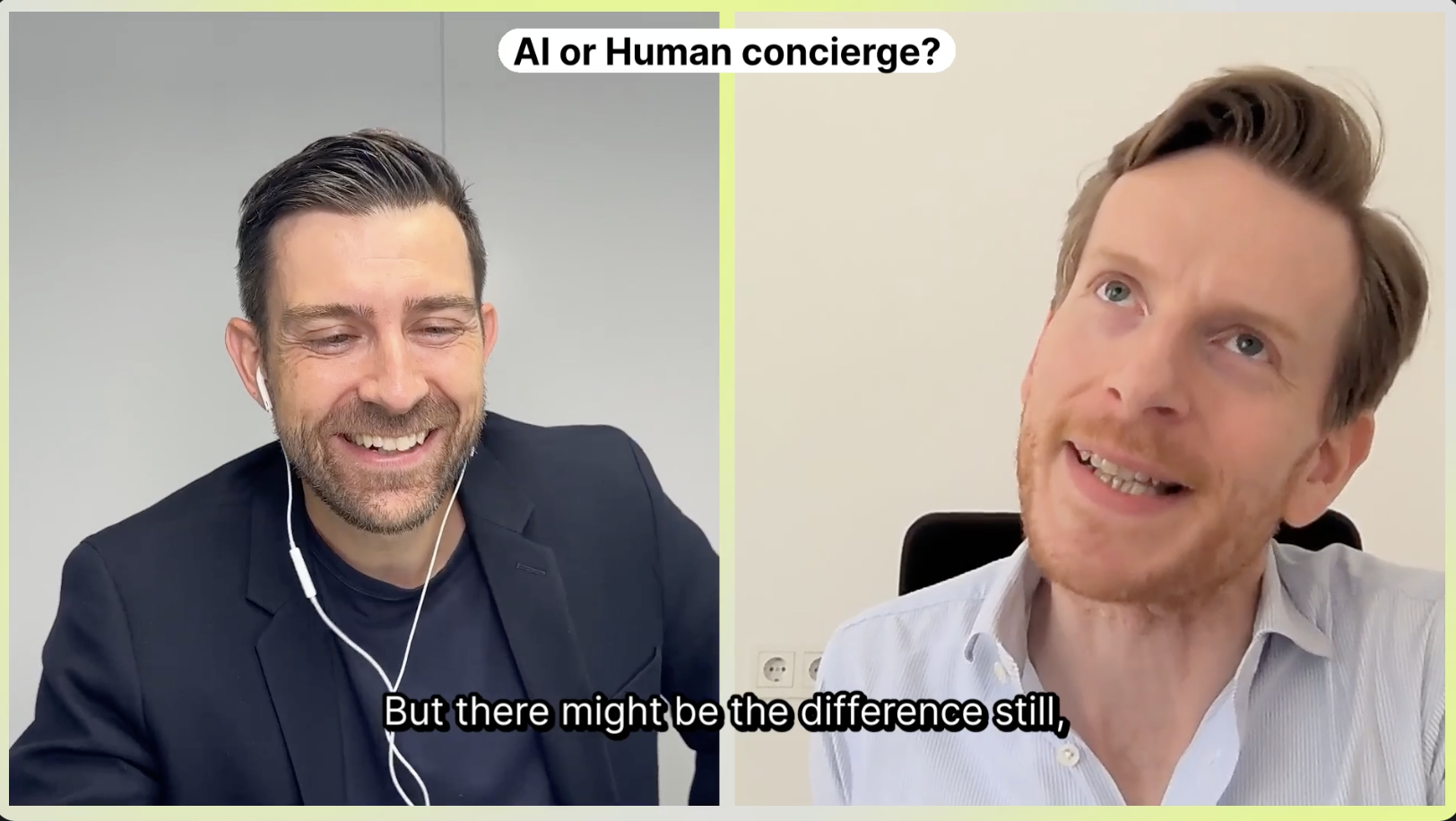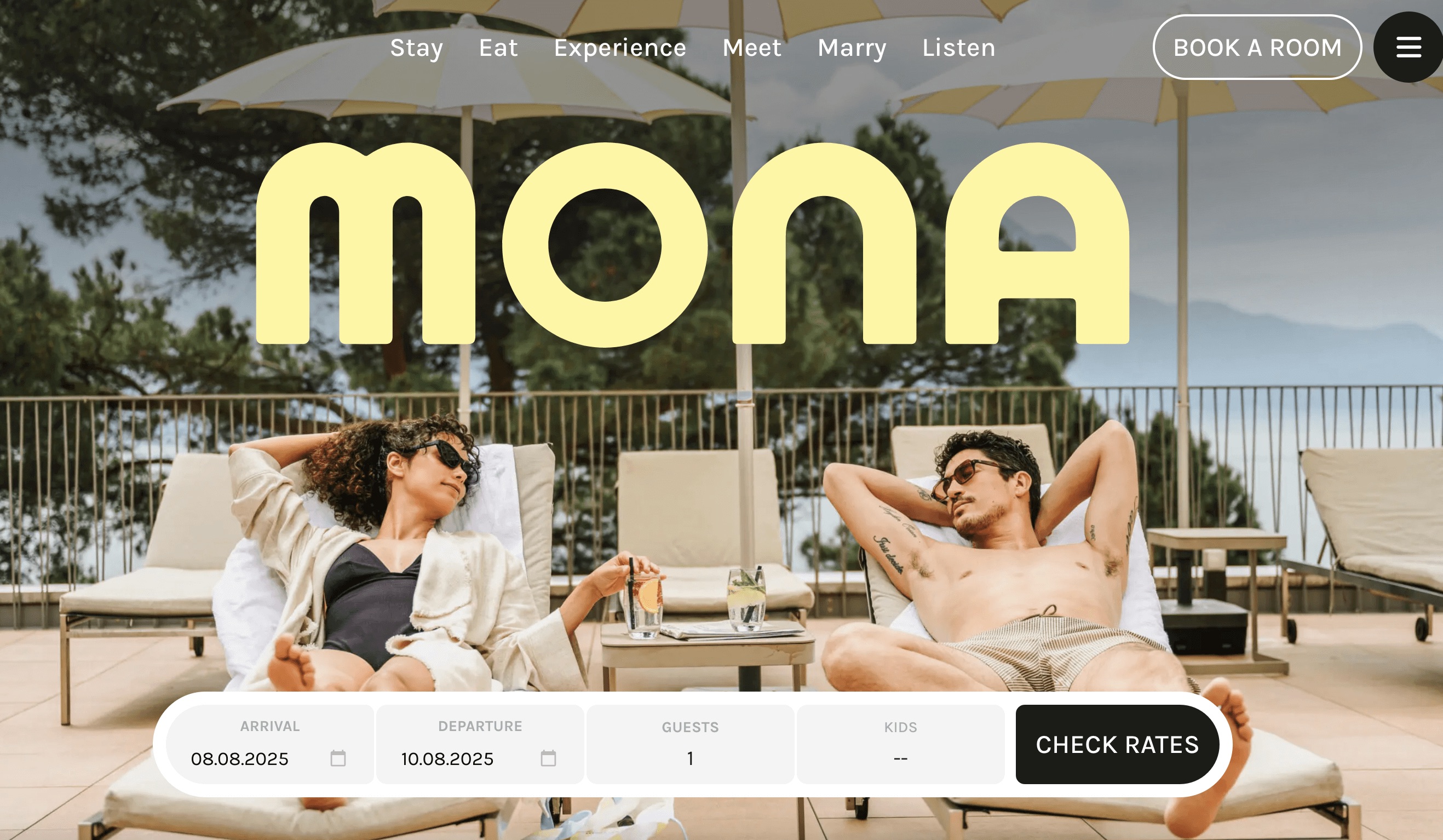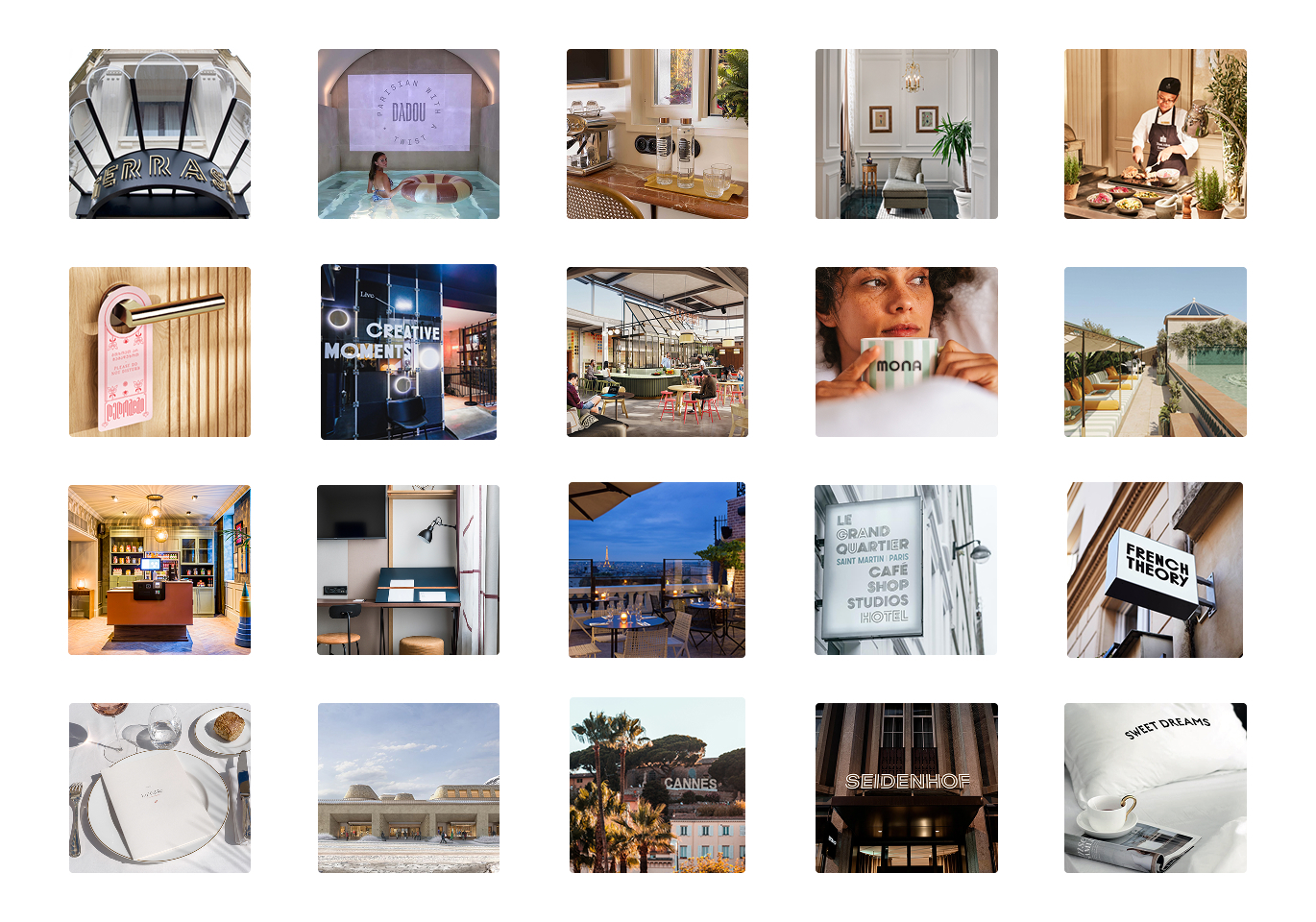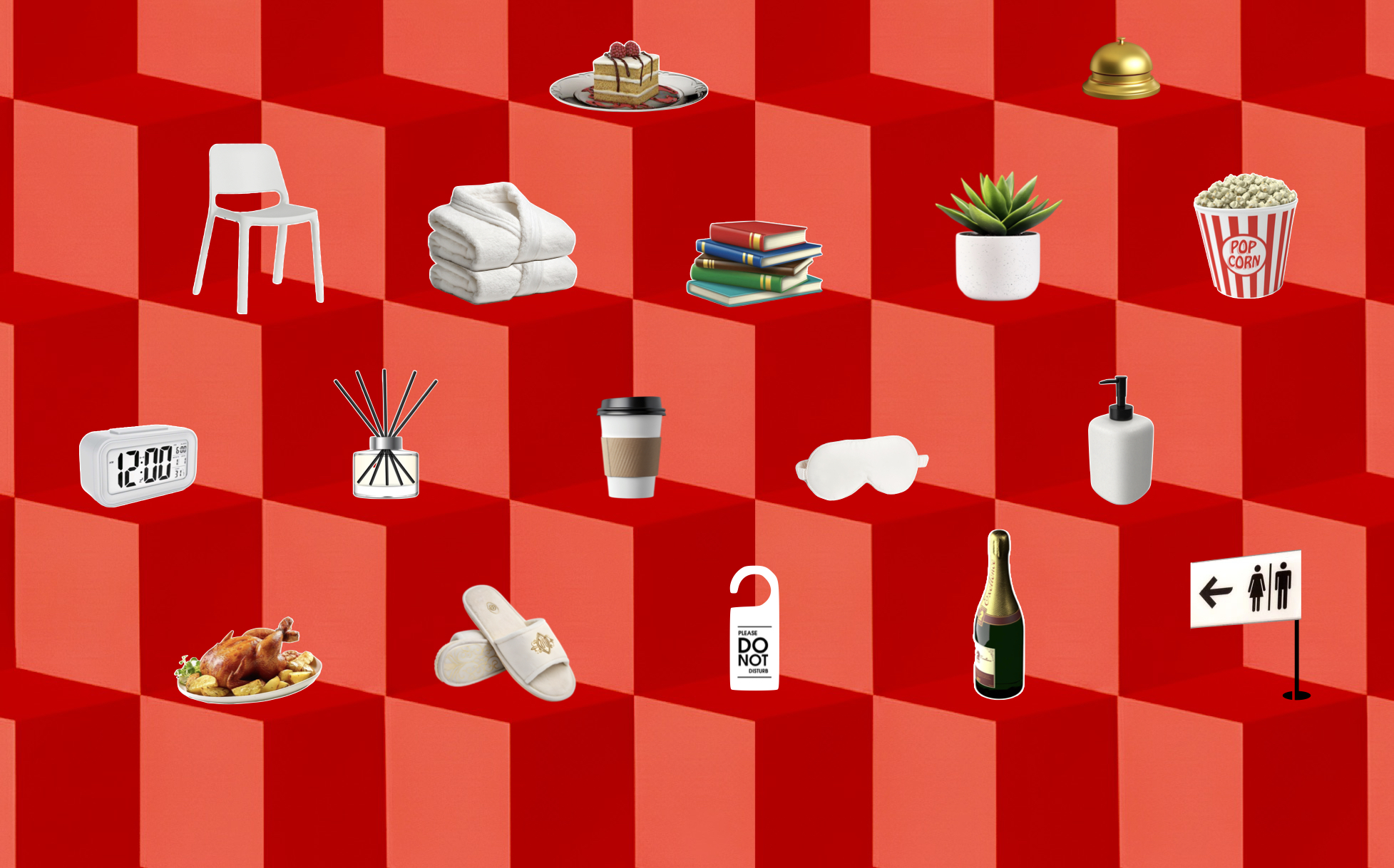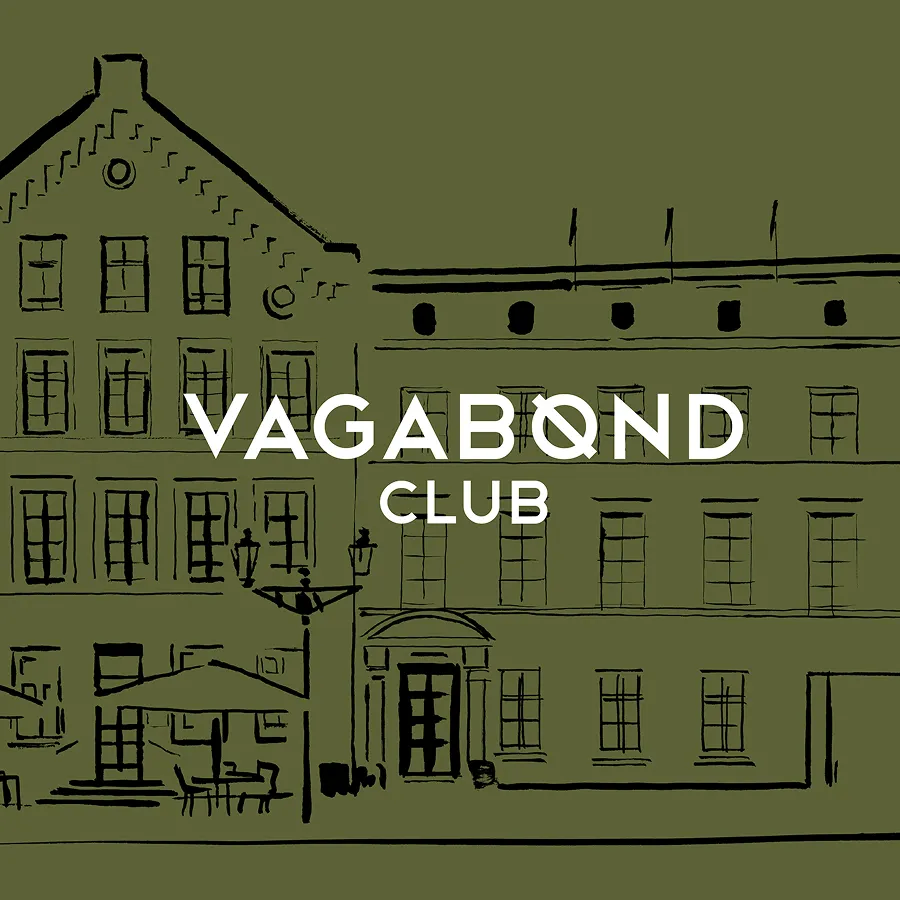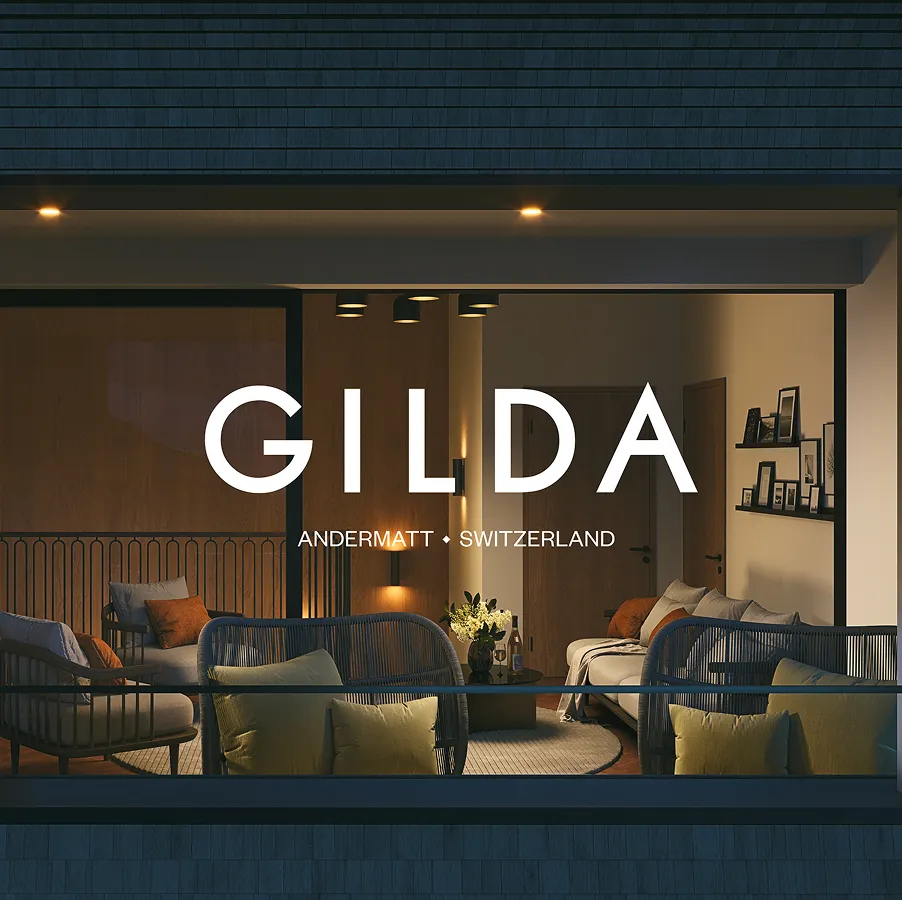Hotel Tech Reality: Where Hotels Should (and Shouldn’t) Spend
In the hotel world, “advanced digital experiences” often collide with reality — the broken A/C in room 304, the patchy Wi-Fi in the lobby, and a to-do list of operational fires.
%20Spend.jpeg)
For most hotels, the real challenge isn’t the technology itself, but the operational readiness — the systems, staff, and discipline — to handle that complexity and ensure it delivers real value for guests and the business. Hoteliers aren’t here to be tech gurus; they’re masters of hospitality, experts in making guests feel welcome and comfortable. Every investment, from the front desk to the in-room gadgets, is filtered through one simple question: does this truly improve the guest experience?
The right technology should be a silent enabler, designed to eliminate friction so that your staff can be fully present and deliver on the promise of hospitality. That's why we've come up with the Tech OR Trap Map — a simple map to help hoteliers decide where to invest and where to walk away.
Our goal is to help you:
- cut through the tech buzz surrounding the hotel industry
- focus on technology that adds tangible value for your guest experience and business performance
- separate useful technology from the expensive gimmicks that are little more than a trap.
While we’ve populated this map with a few common examples, it’s a living framework you can use for any technology investment decision as a quick compass to always orient yourself towards guest experience.
%20Spend%20-%20Tech%20or%20Trap%20Map.jpeg)
Lets dive into each 4 quadrant:
1. Complex Tech & High Perceived Value: The Game-Changers (If You Can Handle It)
This is where the big investments live, and it’s the land of ambitious ideas that can fundamentally change how you operate and how guests experience your hotel — but only if executed flawlessly. This is also where you find AI tools in their most potent form.
Think in-house apps, mobile keycards, WhatsApp concierge, fast and easily connectable Wi-Fi or QR code menus: they’re not rocket science, but for some hotels, setting them up without glitches can feel like a moon landing.
Adding AI concierge tools here might work, but only if they’re guest-facing, instantly helpful, and never break. The moment an AI tool gives a nonsense answer or forces guests through a maze of menus, its "high value" evaporates.
A sophisticated AI tool can also manage your pricing to maximise revenue, predict when maintenance is needed on a broken A/C unit, or offer genuinely personalised recommendations to a guest.
But here's the kicker: this is also where most hotels stumble on execution. They buy the flashy tech without having the operational discipline or a team that knows how to use it. They develop an expensive app that no one uses or an AI that can't tell the difference between a satisfied guest and a complaint.
The value is there, but only if you have the wits and the will to chase it.
⎯⎯
⚠️ Reality check: If you can’t guarantee seamless performance and ongoing maintenance, focus first on easier high-value wins before chasing moonshots.
⎯⎯
2. Simple Tech & High Perceived Value: The No-Brainers
This is the sweet spot. The tech that's easy to implement and guests notice and appreciate immediately, without training or explanation. Think of it as fixing the fundamentals.
Plugs by the bedside. User-friendly AC remote controls. WhatsApp concierge. Netflix on the TV. These are the easy wins that get you thank-yous at check-out instead of eye-rolls. They don't require complex data analysis or a tech guru on staff.
AI in this quadrant is the low-hanging fruit. Forget the fancy-pants pricing models. This is about a basic chatbot and instant translation tool on your website that answers "What time is breakfast?" instantly and accurately, so your staff doesn't have to. The goal is to answer simple questions, remove language barriers, and give guests a quick win. Guests don’t care if it’s "powered by AI". They care that it works instantly, every time.
This quadrant is simple, it (should) works, and it frees your team up to do their actual jobs, like, being hospitable.
⎯⎯
⚠️ Reality check: Hotels love to overcomplicate tech in the name of giving it all to their guests. Resist the urge. Keep it stupidly simple.
⎯⎯
3. Complex Tech & Low Perceived Value: The Tech Graveyard or The Money Pits (or Both)
Welcome to the land of "we did it because we could". This quadrant is full of expensive toys that seem impressive in a press release but mean nothing to your average guest.
This is where you find: Room-service robots. Electronic curtain controls via tablet. Metaverse communities. They're complicated, expensive, and they don't solve a single real-world problem for the average guest. No one checks into a hotel and says, "Man, I wish I could control the curtains with a tablet instead of just pulling them shut".
A lot of AI tools could end up here. Think of the novelty AI robot (designed to respond to humans) in the lobby that bumps into furniture and is more of an obstacle than a help. This is AI as a status symbol, not a solution.
AI then becomes a trap when it’s implemented as a gimmick — like facial recognition check-in that forces guests to stand in front of a camera for three tries before calling reception anyway. It's the ultimate example of being "retarded" in your tech choices.
You spent a ton of money on something that makes everything more difficult for everyone involved.
⎯⎯
⚠️ Reality check: If your guest drops out of your Wi-Fi during a Zoom call, don’t spend a euro on AI facial recognition. Fix the basics first.
⎯⎯
4. Simple Tech & Low Perceived Value: The Basics
This is the baseline. These are things that are easy to set up but don’t actually improve the guest experience in any meaningful way.
The alarm clock (when everyone has a phone) is a perfect example. It's simple, it works, but no one is going to leave a five-star review because you have a working alarm clock.
The same goes for self check-in kiosks that still require a staff member to hover nearby because they confuse half your guests. They were supposed to make things easier, but if they're not well-designed, they just become a low-value version of a simple front-desk transaction.
AI here would look like "predictive minibar restocking" — neat in theory, irrelevant in practice when guests can just call reception.
This quadrant is where you put the absolute essentials that are not meant to impress, just to not fail.
⎯⎯
⚠️ Reality check: Being easy doesn’t make it worth doing.
⎯⎯
Final Thoughts
The smartest hotels focus first on simple, high-value basics — then, then selectively adopt guest-friendly innovations that work flawlessly every time.
Everything else?
Just a shiny distraction that costs money you could have spent fixing the patchy Wi-Fi.
Looking to Turn Your Guest Experience into a Competitive Advantage?
At Creative Supply, we help hospitality leaders position their hotel brand for long-term success — combining strategic branding, exceptional customer experience, and impactful digital design.
👉 Contact us to discover how we can help your hotel stand out and delight your guests.
Hotel Tech Reality: Where Hotels Should (and Shouldn’t) Spend
%20Spend.jpeg)
For most hotels, the real challenge isn’t the technology itself, but the operational readiness — the systems, staff, and discipline — to handle that complexity and ensure it delivers real value for guests and the business. Hoteliers aren’t here to be tech gurus; they’re masters of hospitality, experts in making guests feel welcome and comfortable. Every investment, from the front desk to the in-room gadgets, is filtered through one simple question: does this truly improve the guest experience?
The right technology should be a silent enabler, designed to eliminate friction so that your staff can be fully present and deliver on the promise of hospitality. That's why we've come up with the Tech OR Trap Map — a simple map to help hoteliers decide where to invest and where to walk away.
Our goal is to help you:
- cut through the tech buzz surrounding the hotel industry
- focus on technology that adds tangible value for your guest experience and business performance
- separate useful technology from the expensive gimmicks that are little more than a trap.
While we’ve populated this map with a few common examples, it’s a living framework you can use for any technology investment decision as a quick compass to always orient yourself towards guest experience.
%20Spend%20-%20Tech%20or%20Trap%20Map.jpeg)
Lets dive into each 4 quadrant:
1. Complex Tech & High Perceived Value: The Game-Changers (If You Can Handle It)
This is where the big investments live, and it’s the land of ambitious ideas that can fundamentally change how you operate and how guests experience your hotel — but only if executed flawlessly. This is also where you find AI tools in their most potent form.
Think in-house apps, mobile keycards, WhatsApp concierge, fast and easily connectable Wi-Fi or QR code menus: they’re not rocket science, but for some hotels, setting them up without glitches can feel like a moon landing.
Adding AI concierge tools here might work, but only if they’re guest-facing, instantly helpful, and never break. The moment an AI tool gives a nonsense answer or forces guests through a maze of menus, its "high value" evaporates.
A sophisticated AI tool can also manage your pricing to maximise revenue, predict when maintenance is needed on a broken A/C unit, or offer genuinely personalised recommendations to a guest.
But here's the kicker: this is also where most hotels stumble on execution. They buy the flashy tech without having the operational discipline or a team that knows how to use it. They develop an expensive app that no one uses or an AI that can't tell the difference between a satisfied guest and a complaint.
The value is there, but only if you have the wits and the will to chase it.
⎯⎯
⚠️ Reality check: If you can’t guarantee seamless performance and ongoing maintenance, focus first on easier high-value wins before chasing moonshots.
⎯⎯
2. Simple Tech & High Perceived Value: The No-Brainers
This is the sweet spot. The tech that's easy to implement and guests notice and appreciate immediately, without training or explanation. Think of it as fixing the fundamentals.
Plugs by the bedside. User-friendly AC remote controls. WhatsApp concierge. Netflix on the TV. These are the easy wins that get you thank-yous at check-out instead of eye-rolls. They don't require complex data analysis or a tech guru on staff.
AI in this quadrant is the low-hanging fruit. Forget the fancy-pants pricing models. This is about a basic chatbot and instant translation tool on your website that answers "What time is breakfast?" instantly and accurately, so your staff doesn't have to. The goal is to answer simple questions, remove language barriers, and give guests a quick win. Guests don’t care if it’s "powered by AI". They care that it works instantly, every time.
This quadrant is simple, it (should) works, and it frees your team up to do their actual jobs, like, being hospitable.
⎯⎯
⚠️ Reality check: Hotels love to overcomplicate tech in the name of giving it all to their guests. Resist the urge. Keep it stupidly simple.
⎯⎯
3. Complex Tech & Low Perceived Value: The Tech Graveyard or The Money Pits (or Both)
Welcome to the land of "we did it because we could". This quadrant is full of expensive toys that seem impressive in a press release but mean nothing to your average guest.
This is where you find: Room-service robots. Electronic curtain controls via tablet. Metaverse communities. They're complicated, expensive, and they don't solve a single real-world problem for the average guest. No one checks into a hotel and says, "Man, I wish I could control the curtains with a tablet instead of just pulling them shut".
A lot of AI tools could end up here. Think of the novelty AI robot (designed to respond to humans) in the lobby that bumps into furniture and is more of an obstacle than a help. This is AI as a status symbol, not a solution.
AI then becomes a trap when it’s implemented as a gimmick — like facial recognition check-in that forces guests to stand in front of a camera for three tries before calling reception anyway. It's the ultimate example of being "retarded" in your tech choices.
You spent a ton of money on something that makes everything more difficult for everyone involved.
⎯⎯
⚠️ Reality check: If your guest drops out of your Wi-Fi during a Zoom call, don’t spend a euro on AI facial recognition. Fix the basics first.
⎯⎯
4. Simple Tech & Low Perceived Value: The Basics
This is the baseline. These are things that are easy to set up but don’t actually improve the guest experience in any meaningful way.
The alarm clock (when everyone has a phone) is a perfect example. It's simple, it works, but no one is going to leave a five-star review because you have a working alarm clock.
The same goes for self check-in kiosks that still require a staff member to hover nearby because they confuse half your guests. They were supposed to make things easier, but if they're not well-designed, they just become a low-value version of a simple front-desk transaction.
AI here would look like "predictive minibar restocking" — neat in theory, irrelevant in practice when guests can just call reception.
This quadrant is where you put the absolute essentials that are not meant to impress, just to not fail.
⎯⎯
⚠️ Reality check: Being easy doesn’t make it worth doing.
⎯⎯
Final Thoughts
The smartest hotels focus first on simple, high-value basics — then, then selectively adopt guest-friendly innovations that work flawlessly every time.
Everything else?
Just a shiny distraction that costs money you could have spent fixing the patchy Wi-Fi.
Looking to Turn Your Guest Experience into a Competitive Advantage?
At Creative Supply, we help hospitality leaders position their hotel brand for long-term success — combining strategic branding, exceptional customer experience, and impactful digital design.
👉 Contact us to discover how we can help your hotel stand out and delight your guests.


Hotel Tech Reality: Where Hotels Should (and Shouldn’t) Spend
In the hotel world, “advanced digital experiences” often collide with reality — the broken A/C in room 304, the patchy Wi-Fi in the lobby, and a to-do list of operational fires.
For most hotels, the real challenge isn’t the technology itself, but the operational readiness — the systems, staff, and discipline — to handle that complexity and ensure it delivers real value for guests and the business. Hoteliers aren’t here to be tech gurus; they’re masters of hospitality, experts in making guests feel welcome and comfortable. Every investment, from the front desk to the in-room gadgets, is filtered through one simple question: does this truly improve the guest experience?
The right technology should be a silent enabler, designed to eliminate friction so that your staff can be fully present and deliver on the promise of hospitality. That's why we've come up with the Tech OR Trap Map — a simple map to help hoteliers decide where to invest and where to walk away.
Our goal is to help you:
- cut through the tech buzz surrounding the hotel industry
- focus on technology that adds tangible value for your guest experience and business performance
- separate useful technology from the expensive gimmicks that are little more than a trap.
While we’ve populated this map with a few common examples, it’s a living framework you can use for any technology investment decision as a quick compass to always orient yourself towards guest experience.
%20Spend%20-%20Tech%20or%20Trap%20Map.jpeg)
Lets dive into each 4 quadrant:
1. Complex Tech & High Perceived Value: The Game-Changers (If You Can Handle It)
This is where the big investments live, and it’s the land of ambitious ideas that can fundamentally change how you operate and how guests experience your hotel — but only if executed flawlessly. This is also where you find AI tools in their most potent form.
Think in-house apps, mobile keycards, WhatsApp concierge, fast and easily connectable Wi-Fi or QR code menus: they’re not rocket science, but for some hotels, setting them up without glitches can feel like a moon landing.
Adding AI concierge tools here might work, but only if they’re guest-facing, instantly helpful, and never break. The moment an AI tool gives a nonsense answer or forces guests through a maze of menus, its "high value" evaporates.
A sophisticated AI tool can also manage your pricing to maximise revenue, predict when maintenance is needed on a broken A/C unit, or offer genuinely personalised recommendations to a guest.
But here's the kicker: this is also where most hotels stumble on execution. They buy the flashy tech without having the operational discipline or a team that knows how to use it. They develop an expensive app that no one uses or an AI that can't tell the difference between a satisfied guest and a complaint.
The value is there, but only if you have the wits and the will to chase it.
⎯⎯
⚠️ Reality check: If you can’t guarantee seamless performance and ongoing maintenance, focus first on easier high-value wins before chasing moonshots.
⎯⎯
2. Simple Tech & High Perceived Value: The No-Brainers
This is the sweet spot. The tech that's easy to implement and guests notice and appreciate immediately, without training or explanation. Think of it as fixing the fundamentals.
Plugs by the bedside. User-friendly AC remote controls. WhatsApp concierge. Netflix on the TV. These are the easy wins that get you thank-yous at check-out instead of eye-rolls. They don't require complex data analysis or a tech guru on staff.
AI in this quadrant is the low-hanging fruit. Forget the fancy-pants pricing models. This is about a basic chatbot and instant translation tool on your website that answers "What time is breakfast?" instantly and accurately, so your staff doesn't have to. The goal is to answer simple questions, remove language barriers, and give guests a quick win. Guests don’t care if it’s "powered by AI". They care that it works instantly, every time.
This quadrant is simple, it (should) works, and it frees your team up to do their actual jobs, like, being hospitable.
⎯⎯
⚠️ Reality check: Hotels love to overcomplicate tech in the name of giving it all to their guests. Resist the urge. Keep it stupidly simple.
⎯⎯
3. Complex Tech & Low Perceived Value: The Tech Graveyard or The Money Pits (or Both)
Welcome to the land of "we did it because we could". This quadrant is full of expensive toys that seem impressive in a press release but mean nothing to your average guest.
This is where you find: Room-service robots. Electronic curtain controls via tablet. Metaverse communities. They're complicated, expensive, and they don't solve a single real-world problem for the average guest. No one checks into a hotel and says, "Man, I wish I could control the curtains with a tablet instead of just pulling them shut".
A lot of AI tools could end up here. Think of the novelty AI robot (designed to respond to humans) in the lobby that bumps into furniture and is more of an obstacle than a help. This is AI as a status symbol, not a solution.
AI then becomes a trap when it’s implemented as a gimmick — like facial recognition check-in that forces guests to stand in front of a camera for three tries before calling reception anyway. It's the ultimate example of being "retarded" in your tech choices.
You spent a ton of money on something that makes everything more difficult for everyone involved.
⎯⎯
⚠️ Reality check: If your guest drops out of your Wi-Fi during a Zoom call, don’t spend a euro on AI facial recognition. Fix the basics first.
⎯⎯
4. Simple Tech & Low Perceived Value: The Basics
This is the baseline. These are things that are easy to set up but don’t actually improve the guest experience in any meaningful way.
The alarm clock (when everyone has a phone) is a perfect example. It's simple, it works, but no one is going to leave a five-star review because you have a working alarm clock.
The same goes for self check-in kiosks that still require a staff member to hover nearby because they confuse half your guests. They were supposed to make things easier, but if they're not well-designed, they just become a low-value version of a simple front-desk transaction.
AI here would look like "predictive minibar restocking" — neat in theory, irrelevant in practice when guests can just call reception.
This quadrant is where you put the absolute essentials that are not meant to impress, just to not fail.
⎯⎯
⚠️ Reality check: Being easy doesn’t make it worth doing.
⎯⎯
Final Thoughts
The smartest hotels focus first on simple, high-value basics — then, then selectively adopt guest-friendly innovations that work flawlessly every time.
Everything else?
Just a shiny distraction that costs money you could have spent fixing the patchy Wi-Fi.
Looking to Turn Your Guest Experience into a Competitive Advantage?
At Creative Supply, we help hospitality leaders position their hotel brand for long-term success — combining strategic branding, exceptional customer experience, and impactful digital design.
👉 Contact us to discover how we can help your hotel stand out and delight your guests.
